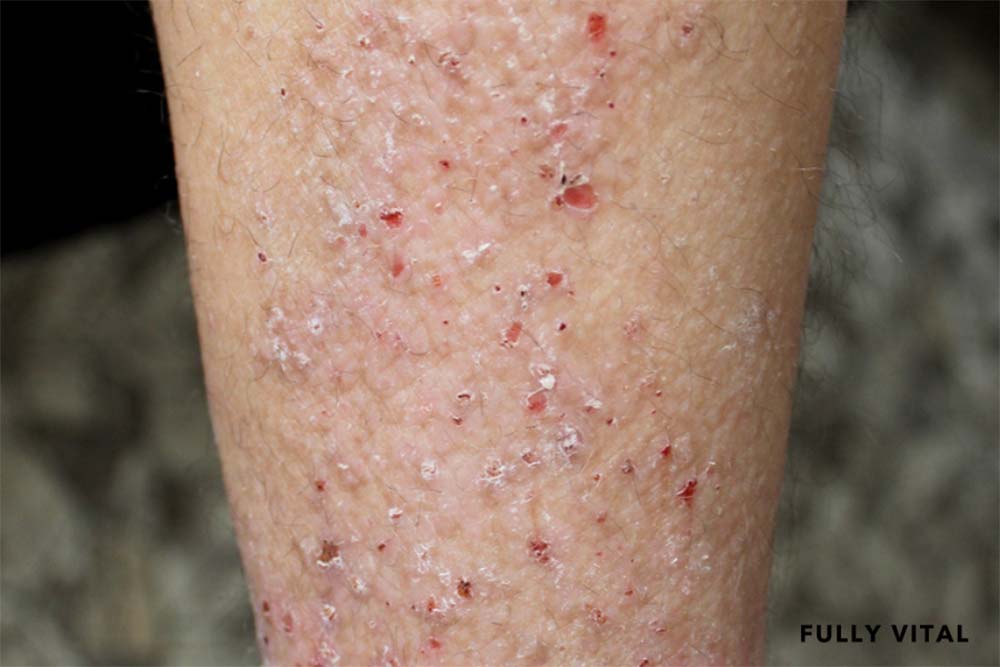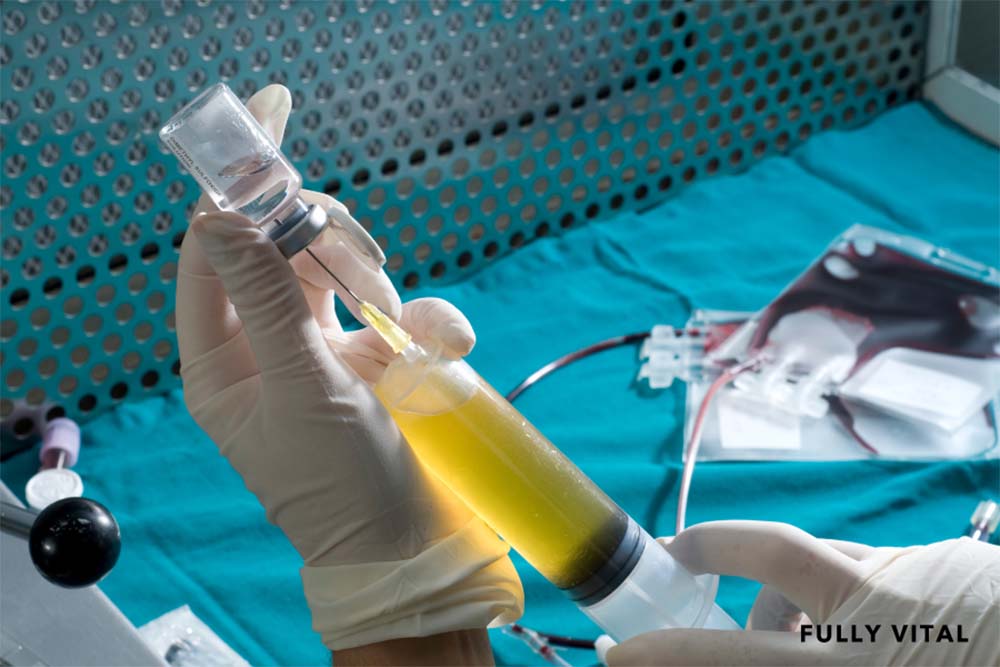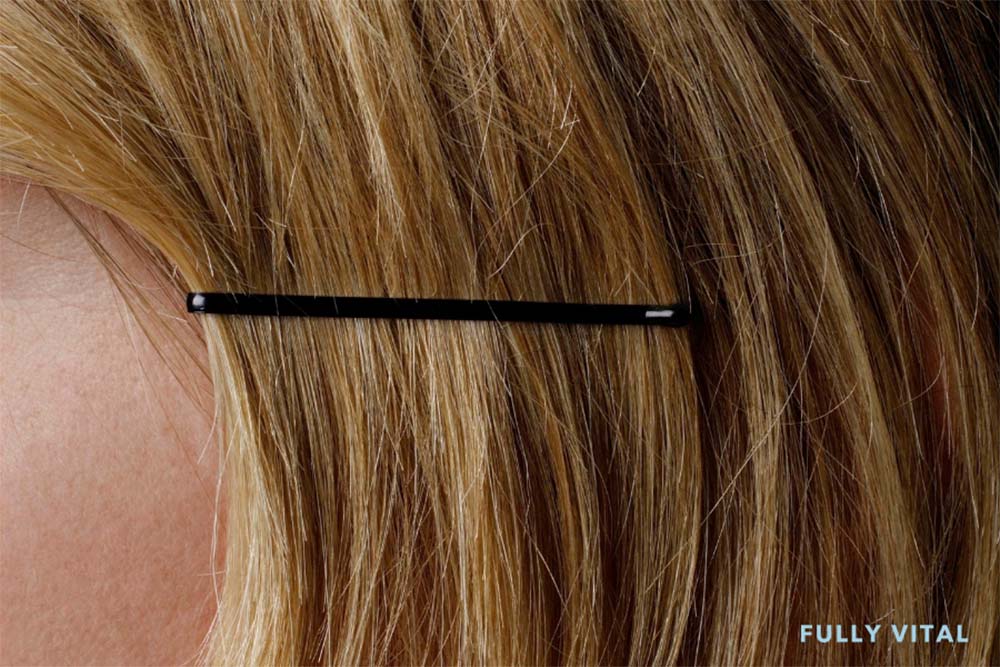
Understanding Lichen Simplex Chronicus: A Key To Healthier Hair Growth
Welcome to our comprehensive guide on Lichen Simplex Chronicus (LSC), a condition that plays a crucial role in the pursuit of luscious locks and vibrant hair growth.
In this article, we'll address the top-searched questions about LSC, shedding light on why it's relevant to your hair journey, how it works, its benefits, potential downsides, and alternative options.
So, let's dive in and unravel the mysteries of Lichen Simplex Chronicus!

I LOVE MY HAIR NOW
FullyVital hair serum and hair vitamins made tremendous improvements in my hair. I truly love my hair now.
Dorit S.,

What Is Lichen Simplex Chronicus?
Lichen Simplex Chronicus, often abbreviated as LSC, is a skin condition characterized by chronic itching and scratching.
It commonly affects the scalp and other parts of the body, leading to thickened, scaly skin patches and hair loss.1
Why Is Lichen Simplex Chronicus Important For Hair Growth?
Understanding Lichen Simplex Chronicus is vital because it can directly impact your hair health.
When left untreated, the persistent itching and scratching associated with LSC can damage your hair follicles, leading to hair loss and hindered growth.
How Does Lichen Simplex Chronicus Affect Hair Growth?
LSC disrupts the normal hair growth cycle by causing inflammation and scarring on the scalp.
This hinders the ability of hair follicles to produce healthy, strong strands.
In essence, LSC can be a roadblock to achieving the hair you desire.2
What Are The Benefits Of Addressing Lichen Simplex Chronicus?
By addressing Lichen Simplex Chronicus effectively, you pave the way for healthier hair growth.
Treating this condition can relieve itching, reduce inflammation, and prevent further damage to your scalp and hair follicles.
Are There Any Downsides To Lichen Simplex Chronicus?
While LSC itself is a downside due to its impact on hair health, treatment options may have potential side effects.
It's essential to weigh the pros and cons of each treatment method in consultation with a healthcare professional.
What Are The Alternatives To Treating Lichen Simplex Chronicus?
If you're looking for alternatives to treat Lichen Simplex Chronicus, there are various approaches, including topical treatments, lifestyle changes, and alternative therapies.
Exploring these options can help you find the right path to alleviating the condition and promoting hair growth.
What Are The Risk Factors Associated With Lichen Simplex Chronicus?
When it comes to Lichen Simplex Chronicus (LSC), understanding the risk factors is essential.
While this condition can affect anyone, certain factors increase the likelihood of its development:
Common Risk Factors for LSC:
- Skin Irritation: Frequent itching and scratching can lead to LSC, making those with sensitive skin more susceptible.
- Stress and Anxiety: Emotional stress can exacerbate itching and contribute to LSC development.
- Previous Skin Conditions: Individuals with a history of eczema, psoriasis, or other skin disorders may be at higher risk.
- Gender: LSC is slightly more common in women, but it can affect both genders.
What Causes Lichen Simplex Chronicus To Flare Up?
Lichen Simplex Chronicus flare-ups can be triggered by various factors.
Understanding these triggers can help you manage and prevent them effectively.
Common Triggers for LSC Flare-Ups:
- Scratching: Continuous scratching worsens LSC symptoms and can lead to flare-ups.
- Stress: Emotional stress can exacerbate itching and trigger LSC episodes.
- Irritants: Exposure to irritants like harsh soaps or detergents can worsen LSC.
- Dry Skin: Insufficient skin hydration can lead to increased itching and flare-ups.
Which Foods Should Be Avoided When Dealing With Lichen Simplex Chronicus?
Diet plays a role in managing Lichen Simplex Chronicus.
While there's no specific diet for LSC, avoiding certain foods can help alleviate symptoms.
Foods to Limit or Avoid:
- Spicy Foods: Spicy foods can exacerbate itching and irritation.
- Alcohol and Caffeine: These can dehydrate the skin, making itching worse.
- Dairy: Some individuals find that dairy products trigger LSC symptoms.
- Processed Foods: Highly processed foods may contain additives that worsen skin conditions.
Best Treatment For Lichen Simplex Chronicus
Effective treatment is key to managing Lichen Simplex Chronicus and preventing its impact on hair growth.
Common LSC Treatment Options:
- Topical Steroids: These can reduce inflammation and itching.
- Moisturizers: Keeping the skin well-hydrated is crucial in managing LSC.
- Antihistamines: These can help alleviate itching.
- Stress Management: Techniques like meditation and yoga can reduce stress-related flare-ups.
- Prescription Medications: In severe cases, your doctor may prescribe stronger medications or therapies.
How To Prevent Lichen Simplex Chronicus From Spreading
Preventing the spread of Lichen Simplex Chronicus involves careful management and lifestyle adjustments.
Tips to Stop LSC from Spreading:
- Avoid Scratching: Breaking the itch-scratch cycle is essential to prevent spreading.
- Use Gentle Skincare Products: Opt for mild, fragrance-free skincare products to avoid irritation.
- Keep Skin Hydrated: Regular moisturizing can help maintain healthy skin.
- Stress Reduction: Managing stress can prevent flare-ups and reduce the risk of spreading.
- Consult a Dermatologist: Seek professional guidance to create an effective treatment and prevention plan.
What Is The History Of Lichen Simplex Chronicus?
Understanding the historical context of Lichen Simplex Chronicus (LSC) sheds light on its importance in the realm of hair growth and the products associated with it.
Here's a brief overview:
- Ancient Origins: Lichen Simplex Chronicus has been recognized for centuries, with historical records dating back to ancient civilizations. While the condition itself has been known for some time, its relevance to modern hair growth products has only recently gained attention.
- Medical Advancements: Over the years, medical research and advancements have deepened our understanding of LSC, highlighting its potential impact on hair health. This historical perspective underscores the need to address LSC within the context of hair growth products.
What Is The Current Environment Of Lichen Simplex Chronicus?
To appreciate why Lichen Simplex Chronicus is pertinent to a hair growth product company, it's crucial to examine the current landscape surrounding this condition:
Key Aspects of the Current LSC Environment:
- Prevalence: LSC remains a prevalent issue, affecting a significant portion of the population. Its co-occurrence with hair loss and hair-related concerns underscores its relevance to those seeking hair growth solutions.
- Clinical Research: Ongoing clinical research is exploring the intricate relationship between LSC and hair growth, leading to the development of specialized products that target this specific concern.
- Consumer Demand: With a growing demand for hair growth products among diverse demographics, addressing the role of Lichen Simplex Chronicus in the hair health equation has become a priority for the industry.
What Is The Future Of Lichen Simplex Chronicus In Hair Growth Products?
Looking ahead, the future of Lichen Simplex Chronicus holds significant promise in the domain of hair growth products.
Here's a glimpse of what lies ahead:
- Innovative Solutions: Advances in scientific understanding and technology are likely to lead to innovative products tailored to address LSC-induced hair issues effectively.
- Personalized Care: Future developments may enable personalized solutions for individuals dealing with Lichen Simplex Chronicus, providing a more targeted approach to hair growth concerns.3
- Holistic Approaches: The industry's future may embrace holistic approaches that consider not only hair growth but also skin health, offering comprehensive solutions for those affected by LSC.
Unlock The Power Of Youthful Hair With Fully Vital!Discover our science-backed hair growth products, meticulously crafted to combat the effects of aging on your locks. At Fully Vital, we're on a mission to help you achieve a healthier and more vibrant relationship with your hair. Key Features and Benefits:
Embrace the beauty of ageless hair with Fully Vital. Your journey to healthier, more resilient locks starts here! |
Final Thoughts On Lichen Simplex Chronicus
Lichen Simplex Chronicus (LSC) is more than just a skin condition; it's a crucial factor to consider in your quest for healthier, more vibrant hair.
Understanding the risk factors, triggers, and management strategies associated with LSC is pivotal for anyone seeking to unlock the full potential of their locks.
At Fully Vital, we're dedicated to helping you maintain a healthy relationship with your hair.
Our range of hair growth products is designed to combat the aging of your hair, addressing concerns like LSC and promoting the luscious, youthful hair you desire.
Remember, taking proactive steps to manage LSC and exploring the right hair growth products can make a significant difference in your journey toward beautiful, resilient hair.
Stay informed, seek professional guidance, and make informed choices that empower your hair health.
Your locks deserve the best, and Fully Vital is here to support you every step of the way.
Frequently Asked Questions About Lichen Simplex Chronicus
Can Lichen Simplex Chronicus cause permanent hair loss?
Yes, if left untreated, Lichen Simplex Chronicus can lead to permanent hair loss due to scarring and damage to the hair follicles.
Is Lichen Simplex Chronicus contagious?
No, Lichen Simplex Chronicus is not contagious.
It's a chronic skin condition that develops due to persistent scratching and skin irritation.
Can Lichen Simplex Chronicus be cured?
While Lichen Simplex Chronicus can be managed and treated effectively, it may not always be entirely curable.
The goal of treatment is to control symptoms and prevent further damage.
What are the common triggers of Lichen Simplex Chronicus?
Common triggers of Lichen Simplex Chronicus include stress, anxiety, and frequent scratching of the affected area.
Identifying and managing these triggers can be essential in managing the condition.
Is it necessary to see a dermatologist for Lichen Simplex Chronicus treatment?
Yes, it's advisable to consult a dermatologist for proper diagnosis and treatment of Lichen Simplex Chronicus.
They can recommend the most suitable treatment plan based on your specific case.
Are there natural remedies for managing Lichen Simplex Chronicus?
Some individuals find relief from Lichen Simplex Chronicus symptoms through natural remedies like oatmeal baths, aloe vera gel, and avoiding triggers.
However, it's essential to consult with a healthcare professional for a personalized treatment plan.
Are there natural remedies for managing Lichen Simplex Chronicus?
While there are no direct natural remedies for Lichen Simplex Chronicus, some individuals find relief from symptoms by using soothing, non-irritating skin care products, taking oatmeal baths, applying aloe vera gel, and avoiding known triggers.
However, consult a healthcare professional for personalized advice and treatment recommendations.
What can I do to relieve itching caused by Lichen Simplex Chronicus?
To relieve itching associated with Lichen Simplex Chronicus, consider using over-the-counter or prescription antihistamines as recommended by your healthcare provider.
Additionally, applying cool compresses and keeping the affected area well-moisturized can provide relief.
Can I continue using my regular hair care products if I have Lichen Simplex Chronicus?
It's advisable to avoid hair care products that contain harsh chemicals or irritants if you have Lichen Simplex Chronicus.
Opt for gentle, fragrance-free products that are less likely to trigger itching and irritation.
Consult with a dermatologist for product recommendations tailored to your specific needs.
How long does it take to see improvements with LSC treatment?
The timeline for improvement with Lichen Simplex Chronicus treatment can vary from person to person.
Some individuals experience relief within weeks, while others may require several months of consistent treatment.
Patience and adherence to the prescribed treatment plan are key.
Sources:
- Charifa, A., Badri, T., & Harris, B. W. (2022). Lichen Simplex Chronicus. PubMed; StatPearls Publishing. https://www.ncbi.nlm.nih.gov/books/NBK499991/#:~:text=Lichen%20simplex%20chronicus%20is%20defined
- Chu, T., Santos, L., & McElwee, K. (2015). Biology of the hair follicle and mechanisms of nonscarring and scarring alopecia. Seminars in Cutaneous Medicine and Surgery, 34(2), 50–56. https://doi.org/10.12788/j.sder.2015.0133
- Ju, T., Vander Does, A., Mohsin, N., & Yosipovitch, G. (2022). Lichen Simplex Chronicus Itch: An Update. Acta Dermato-Venereologica, 102, adv00796. https://doi.org/10.2340/actadv.v102.4367







